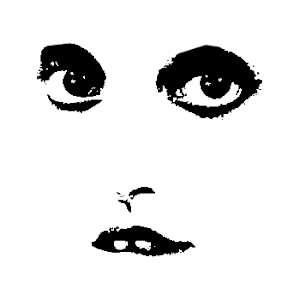- cross-posted to:
- nonpolitical_memes@lemmy.ml

Just put it in mono. Now, how can I fix this infamous autotune trend?

this kind of comment just reminds me of how people used to complain about distortion on electric guitars when it was initially discovered/invented/popularized

For me, your comparison falls short in the sense that electric guitar distortions actually amplified the audio resources musicians had to express ideas and textures. Autotune was initially a tool that also did enhance the set of tools musicians had before it appeared, however, the lack of creative uses compared to the amount of use it gets in the industry, makes it a trope to my ears. Autotune feels like a Marvel Comics hero movie at this point.

It was the early days of a new technology and way of listening that was completely different compared to the past 60+ years of recorded audio. I guess as a more modern analogy it’s like those cheap 3D films at the height of the fad that felt the need to gratuitously shove objects directly in front of the camera to get the most out of the 3D effect.

Those were the better 3d movies because they at least felt like there was depth. Unlike those modern movies.

What’s interesting is just how different the quality was of some of the stereo releases vs the mono bounces. For an example, the stereo HDCD version of Pet Sounds is a little wack, but even if you joined the two channels to mono it sounds a hundred times better than the shittastic mono release. Got to wonder if they optimized it for AM radio play the way that similarly awful sounding releases in the early 2000s optimized for iPod earbuds.

This is why, when it comes to old music, I always try to listen to it the way it was originally intended.
Pet Sounds, as beautiful as it is, was originally released in mono. It was mastered to be listened to in mono, at a time when stereo was mostly just a novelty.
It wasn’t until much more recently that they’ve taken those masters and created “real” stereo mixes from them. While they can often sound pretty good, they never quite reach the level of the best sounding mono mixes of the same material.
Just my opinion of course.

That may be a thing with some releases, but I’m convinced that the original pet sounds and even the MFSL mono release are very inferior to that one HDCD stereo release. Still I’m listening to in 16bit/44kHz form, but to me it sounds way higher fidelity and likely is closer to the source. I can pick out instruments and sounds that I didn’t hear in the other version.
In general though I find modern ‘remasters’ are horrible and compressed and I think it’s lame that services like Spotify usually have only the most recent (and therefore worst) version of a given album.
May the source be with you

Is that why some 00’s songs sound so compressed?

00s music sounds so shitty because that was when digital music first became a thing. People thought 128kbps bitrate MP3s were acceptable (until they hear that mp3 they got from KaZaa play over the PA at their wedding and realize it sounds like raccoons fighting in a trashcan).

No, like songs I listen to today on Spotify or from TV shows during that era sound weirdly compressed.

I think it’s the tendency of producers in that era, around 2000-2010 was peak Loudness War, and many albums were pushed into clipping. IMO it started getting better through the 2010s as the emphasis on radio charts started to wane and listening habits shifted away from earbuds and portables.

I believe that they had stereo mixing pretty figured out by the 70s…
Early-mid 60s though? Sure.
Unless you’re referring to when they started mixing mono albums into stereo, then yeah. Those albums were never meant to be listened in stereo, and I wouldn’t listen to a remaster of any of them unless they were officially approved by the band, or done by the band’s own producer. And even then…

Wild guess but stereo equipment wasn’t a thing in households and it was a way to get the adoption going

Think this is more an artifact of the way vinyl records worked - since audio can be encoded in two channels via the way the needle moves in certain orientations

Urr, I don’t think that’s it. I’m not sure stereo sound for vinyls has ever worked so that something like this would be necessary, and it wouldn’t really make sense – why would they have to put vocals on one channel and instruments on the other?
A stereo vinyl player just has the needle moving up and down in addition to left and right, so that the left-right axis is the sum of the waveforms of both channels and the up-down axis is the difference – which means that a regular mono player can play stereo vinyls

Hm, not sure why they’d do it then - maybe just easier to keep organized with the workflow of the time?

I’d be perfectly fine if everything was just mixed mono. I see little value in stereo. I’m weird like that.

In electronic music you often slightly detune the left and right of a synthesizer to make it sound “wide”, you can’t do that in mono and if you mix the stereo down to mono it sounds boring.

Cant you do that in mono with two oscillators? Also aren’t analog synths mono most of the time?

like @zaphod said, its mostly to make it sound wider. in mono, everything sounds like its in the center of your skull. in stereo, some stuff it a few inches from my ear (wherever the drivers are), some stuff can be in my head, some can even be in my throat if that makes sense

My dad had some albums, maybe Mike Oldfield or others…there was a train going through a station, and hearing it pass from left to right in stereo was amazing at the time

The early days of stereo (which is what you’re talking about, the recordings of 70s which aren’t using stereo as an “effect” almost universally have the vocals panned to the center. The old way to take the vocals out of a recording was to adjust how much of the signal present equally on both channels was allowed to be played) were all about two things: backwards compatibility with mono systems and giving people with stereo systems a recognizable effect no matter what goofy system they had.
Wild panning accomplishes both goals.
Studio engineering that used the stereo format to create the illusion of a room or capture the sound of the room the players were playing in wasn’t developed yet and came from the experimental stereo recordings that sound crazy now like silver apples of the moon.

It’s fun and interesting all the experimentation that went on back then. As someone deaf in one ear… it’s hard to truly appreciate, but I get it.

CMV: Mono mix of Jefferson Airplane’s “White Rabbit” is better.
